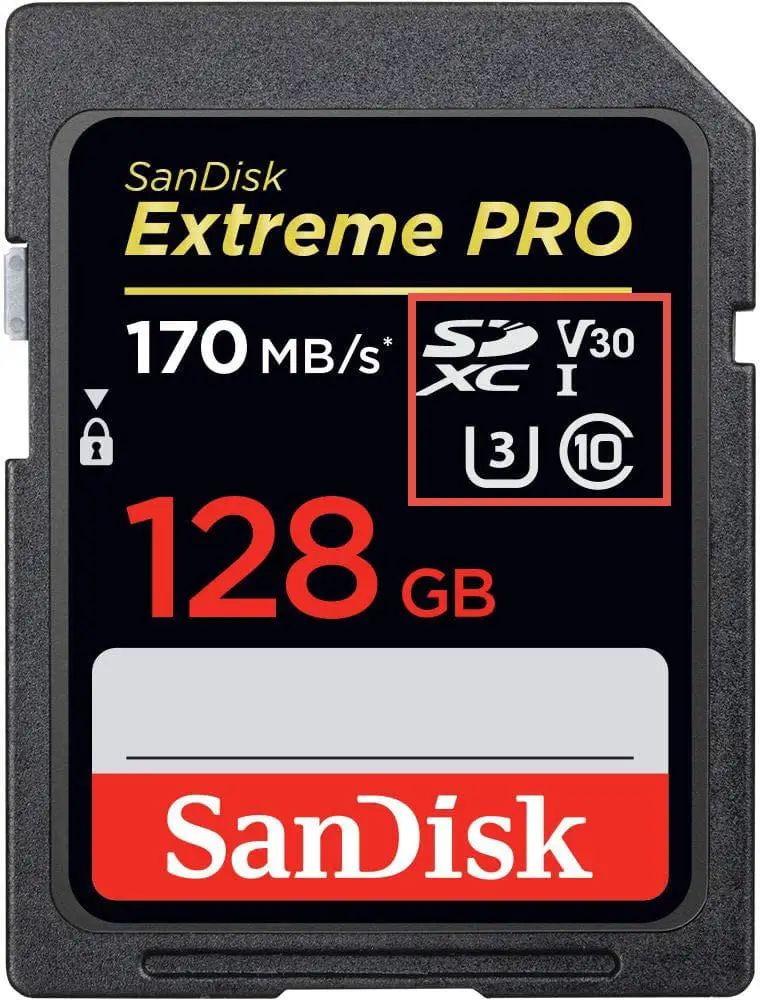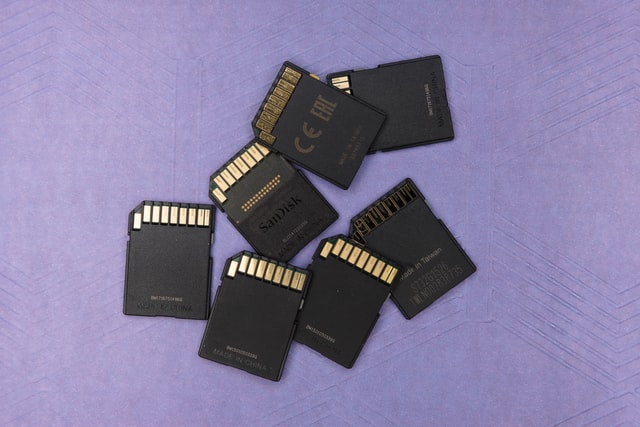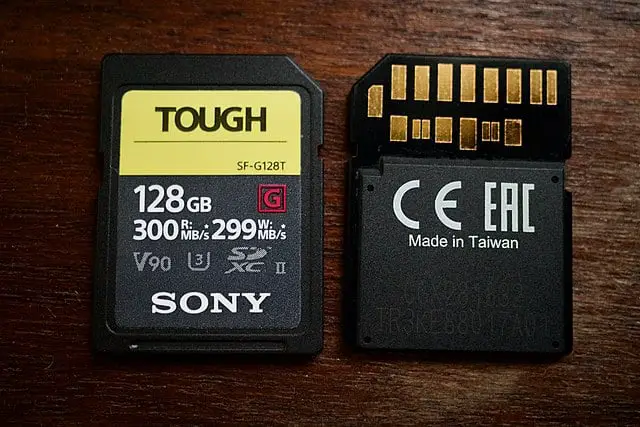If you’ve ever tried to compare SD cards, the different types and classes might have left you more confused than when you started.
SD cards have classes for Speed Class (sometimes referred to as Original Speed Class because it was the first type), Bus Interface, UHS Speed Class and Video Speed Class.
Original Speed Class, UHS Speed Class and Video Speed Class all refer to the same thing, minimum sequential write speed, while the Bus Interface denotes the maximum possible transfer speed.

Class 10 vs UHS-I
For SD cards, Class 10, abbreviated as C10 and shown on the card as a 10 inside a C, refers to the Original Speed Class, and UHS 1, often denoted as UHS-I with a Roman numeral, refers to the Bus Interface.
C10 is the highest Original Speed Class and offers a minimum sequential write speed of 10MB/s. The UHS 1 Bus Interface offers transfer speeds of between 50MB/s and 100MB/s.
What Does Original Speed Class Measure?
Original Speed Class, also simply called Speed Class, was the first speed designation for SD cards.
The classes start at Class 2, abbreviated as C2, with a minimum sequential write speed of 2MB/s. Classes 4 and 6, denoted as C4 and C6, have speeds of 4MB/s and 6MB/s, respectively.
Class 10, or C10, cards have a minimum speed of 10MB/s and also must use a bus interface that can transfer 25MB/s or more.
The purpose of Original Speed Class was to let users know which cards could support higher resolution video such as Full HD.

| Minimum Sequential Writing Speed | Speed Class |
|---|---|
| 2MB/s |  |
| 4MB/s |  |
| 6MB/s |  |
| 10MB/s |  |
What Does Bus Interface Mean?
The Bus Interface is the top speed that data can be transferred onto or off of an SD card. That usually refers to the speed at which data can be read, because writing data to a card is generally slower than reading it.
For the very first SD cards, the maximum transfer speed was 12.5MB/s.
The High Speed Bus Interface doubled that to 25MB/s, and UHS 1 offers between 50 and 104MB/s transfer speeds.
Later interfaces, from UHS 2 and UHS 3, denoted as UHS-II and UHS-III on cards, to SD Express increase the maximum transfer speed further.
UHS 2 has maximum transfer speeds of 156MB/s or 312MB/s, and UHS 3 has maximum transfer speeds of 312MB/s or 624MB/s. SD Express has three possible speeds, starting at 985MB/s, moving to 1,969MB/s and topping out at 3,938 MB/s.
| Maximum Transfer Speed Speed | UHS Bus Interface |
|---|---|
| 50-104MB/s |  |
| 156-312MB/s |  |
| 312-624MB/s |  |
| 985-3938MB/s |  |
Note though, that as the bus interface goes from UHS-I to UHS-II and III, extra pins are added to the card. Although a UHS-II card is backwards-compatible with UHS-I devices, they will not make use of the extra transfer speeds as they lack the necessary pins. Very few devices support UHS-II currently, meaning that unless you are using a very modern camera or other product, you would be best to stick to UHS-I SD cards.


(Image Credi: Wikimedia Commons)
What Does Video Speed Class Measure?
Video Speed Class ranges from Class 6, denoted as V6, to Class 90, denoted as V90, with the number representing the minimum sequential write speed in megabytes per second. The classes are V6, V10, V30, V60 and V90.
Video Speed Class was developed in response to the performance demands of 4K and 8K video recording, with 6MB/s the minimum for 4K and 30MB/s the minimum for 8K.
| Minimum Sequential Writing Speed | Video Class | Supports Up to: |
|---|---|---|
| 6MB/s |  |
4K video |
| 10MB/s |  |
4K Video |
| 30MB/s |  |
8K Video |
| 60MB/s |  |
8K Video |
| 90MB/s |  |
8K Video |
What Does UHS Speed Class Measure?
SD card terminology can be pretty confusing, and perhaps the worst offender is UHS Speed Class. That is distinct from Bus Interface, even though both use the name UHS.
Like the other speed classes, UHS Speed Class tells you the minimum sustained write speed of a card. There are two classes, U1, denoted by the numeral 1 inside a U, and U3, denoted by a 3 inside a U.
U1 cards have a minimum speed of 10MB/s, while U3 cards have a minimum speed of 30MB/s.
The Bus Interfaces UHS 1, UHS 2 and UHS 3, on the other hand, tell you the maximum transfer speed of data. This often means the speed at which data is read off the card, which is faster than writing data onto the card.
| Minimum Sequential Writing Speed | UHS Speed Class |
|---|---|
| 10MB/s |  |
| 30MB/s |  |
What’s The Difference Between Original Speed Class and UHS Speed Class?
The different classes can be confusing, especially when they use a similar numbering system like Original Speed Class and UHS Speed Class.
When you see Speed Class with no qualifier that almost always refers to Original Speed Class, and the category number directly corresponds to the minimum write speed.
With UHS Speed Class, on the other hand, the numbers aren’t direct. Class U1 refers to a minimum write speed of 10MB/s, while U3 means a minimum write speed of 30MB/s.
Essentially, Original Speed Class C10 and UHS Speed Class U3 refer to the same minimum write speed.
Why Are There So Many Classes?
The existence of multiple speed classes and other categories can make comparing SD cards quite difficult, so why are there so many categories and classes?
Part of the reason is that the needs of users have changed and grown since the very first SD cards, making new classes necessary. Part of it is also the growth in technology.
When SD cards were first introduced, write speeds of 90MB/s weren’t possible. As technology and the needs of users expanded, new speed classes were added.
That’s reflected in the naming of the different classes, especially the most recent addition, Video Speed Class.
Read More:






2 Responses
LizR
This was *extremely* helpful as I am currently comparing 256gb cards for my new dash cam. Thank you!
Tim Daniels
Thanks!